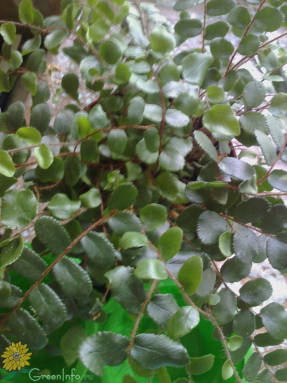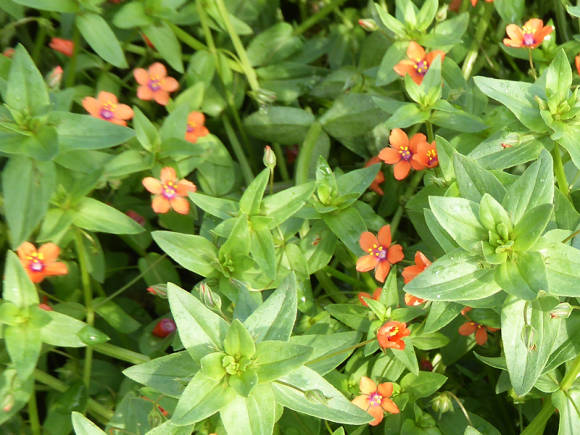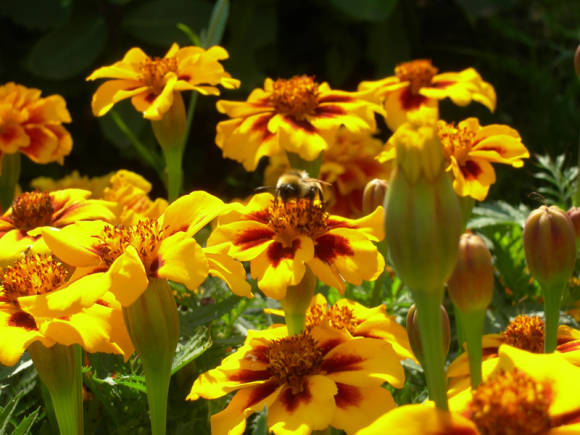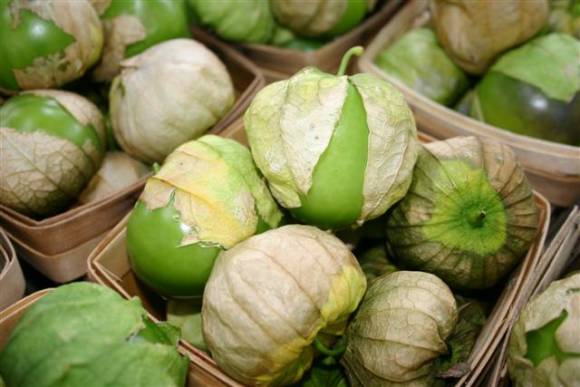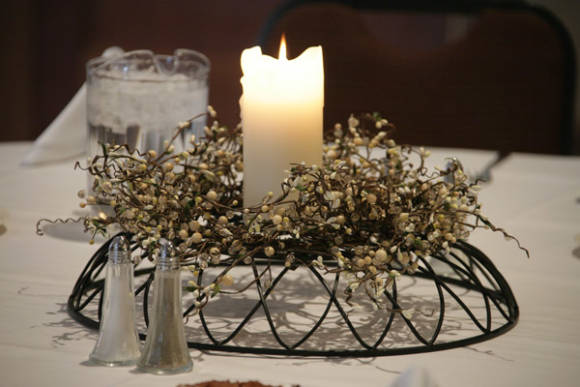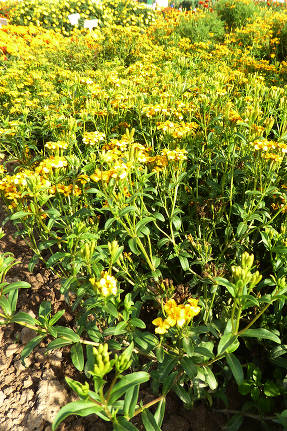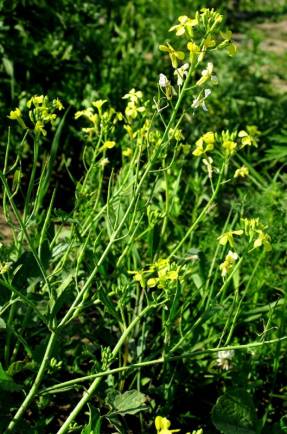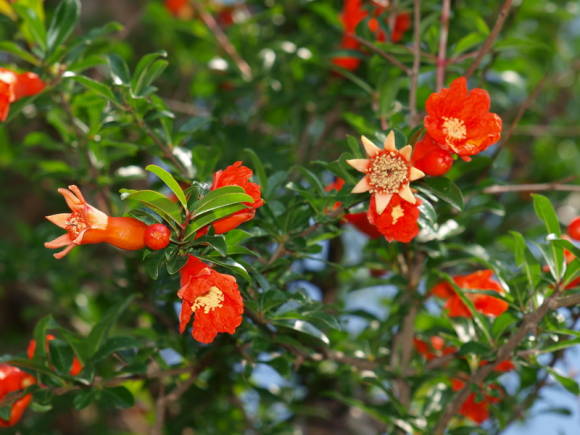 This unusual colorful plant is simply the epitome of the miniature tree of Paradise. Recently, it has become so popular on Christmas Eve that another - Christmas berry - has been added to the traditional name Coral tree. Ardisia crenate (Ardisia crenata) native to the subtropical zone of East Asia, belongs to the Mirsin family (Myrsinaceae).
This unusual colorful plant is simply the epitome of the miniature tree of Paradise. Recently, it has become so popular on Christmas Eve that another - Christmas berry - has been added to the traditional name Coral tree. Ardisia crenate (Ardisia crenata) native to the subtropical zone of East Asia, belongs to the Mirsin family (Myrsinaceae).Ardisia crenate is a compact bush or miniature single-stemmed tree up to 1 m in height, with a beautiful tiered arrangement of branches, a dense "crown" of foliage and a "wreath" of berries at the base. Its evergreen glossy, leathery leaves with a crenate edge are very attractive. In spring or summer, small and not very expressive, but fragrant, white with a tinge of pink flowers appear. They are collected in axillary or apical drooping complex corymbose inflorescences. Soon after flowering, globular, shiny drupes begin to ripen. From light coral to autumn, they gain color to bright scarlet. On Christmas Eve, the coral red berries are the most intense in color and abundant. Now they have bred varieties with white and pink berries. The fruits are able to remain on the tree until the next flowering, so ardisia retains its attractiveness without much care during the Christmas and New Year holidays. In countries without cold winters, it is grown as an easy-to-care, undersized shade-tolerant ornamental shrub. So unpretentious that in some countries they refused to cultivate it in the open field for fear of the expansion of local species.
At home, this is also a rather undemanding plant.
 |  |
Maintenance and care in room conditions
Soil composition... Ardisia is undemanding to the soil, it can grow in light and heavy soils, it is only necessary to provide good drainage. Acidity can range from slightly acidic to slightly alkaline.Illumination
... Prefers bright, diffused light with some direct sunlight. East-facing windows are best suited for it.Watering regular, ardisia likes a constantly slightly damp substrate. The optimum air humidity is 50-60%, frequent spraying will help maintain the necessary humidity and prevent the spread of spider mites.
Content temperature indoor, + 18 + 250C, in winter it is desirable to lower it to + 150C, then flower buds are more readily laid. The minimum temperature for ardisia is + 70C degrees.
Transplanted plants as the roots fill the entire space of the pot. Young plants - every year in spring, before flowering, adults - every few years. Every six months, carefully replace the top layer of the substrate with a fresh one. Ardisia blooms and bears fruit more readily in a cramped pot.
Feed a plant from spring to autumn every two weeks with universal complex fertilizers, in winter, feeding is canceled.
Flowering occurs in spring or early summer. At this time, it is desirable to provide ardisia with a sufficient amount of light and not to allow the substrate to dry out. Dry soil and cold drafts can cause buds to fall off. The flowers of the ardisia are bisexual; artificial pollination with a soft brush is used to set the berries. In September-December, small, up to 1 cm, fruits ripen - single-seeded drupes. Ardisia fruits are not edible, but they are not poisonous either. The seeds must be sown into the ground immediately after extraction from the berry. The germination rate of fresh seeds is 85-100%, seedlings appear in about 40 days, while the composition of the soil does not matter. Germination occurs at a temperature of + 25 ° C and above. Ardisia is cut reluctantly, only in greenhouses with lower heating and with the use of root formation stimulants. To give a decorative look to plants and accelerate flowering, manufacturers use special substances that inhibit vertical growth (retardants). At home, the acquired plant begins to actively grow upward. To maintain its compact form, ardisia requires regular pruning in the spring before flowering. Dry tips and edges of leaves appear in very dry air and cold drafts. Yellowing of leaves may be caused by insufficient lighting or starvation of the plant. It is necessary to provide the plant with more light, but if the young leaves at the same time bloom light again, then increase the dose of dressings or change the fertilizer (dressings must necessarily contain trace elements). Dry whitish spots on the leaves - a sign of too intense lighting, the plant received sunburn. It is necessary to protect it from the bright midday rays. Of pests ardisia are affected by mealybugs, scale insects, aphids, spider mites. Read more about pest control measures in the article Houseplant pests and control measures. Ardisia is not only an ornamental, but also a useful plant - in Chinese medicine, its roots, leaves and fruits are used in the treatment of rheumatoid arthritis, lumbago, traumatic injuries, with snake bites, for the treatment of infectious diseases of the upper respiratory tract.
Possible growing problems
 Ardisia has one biological feature - the presence of swellings along the edge of the leaf, which many take for a disease. Symbiotic nitrogen-fixing bacteria live here, which help the plant to assimilate nitrogen from the air. They need to be protected and in no case cut off, as this leads to inhibition of plant growth. By the way, it has recently been proven that the roots of Ardisia live in symbiosis with fungi and have endomycorrhiza. Therefore, the transplant must be done carefully, without damaging the roots and with part of the soil.
Ardisia has one biological feature - the presence of swellings along the edge of the leaf, which many take for a disease. Symbiotic nitrogen-fixing bacteria live here, which help the plant to assimilate nitrogen from the air. They need to be protected and in no case cut off, as this leads to inhibition of plant growth. By the way, it has recently been proven that the roots of Ardisia live in symbiosis with fungi and have endomycorrhiza. Therefore, the transplant must be done carefully, without damaging the roots and with part of the soil.
